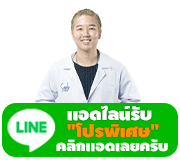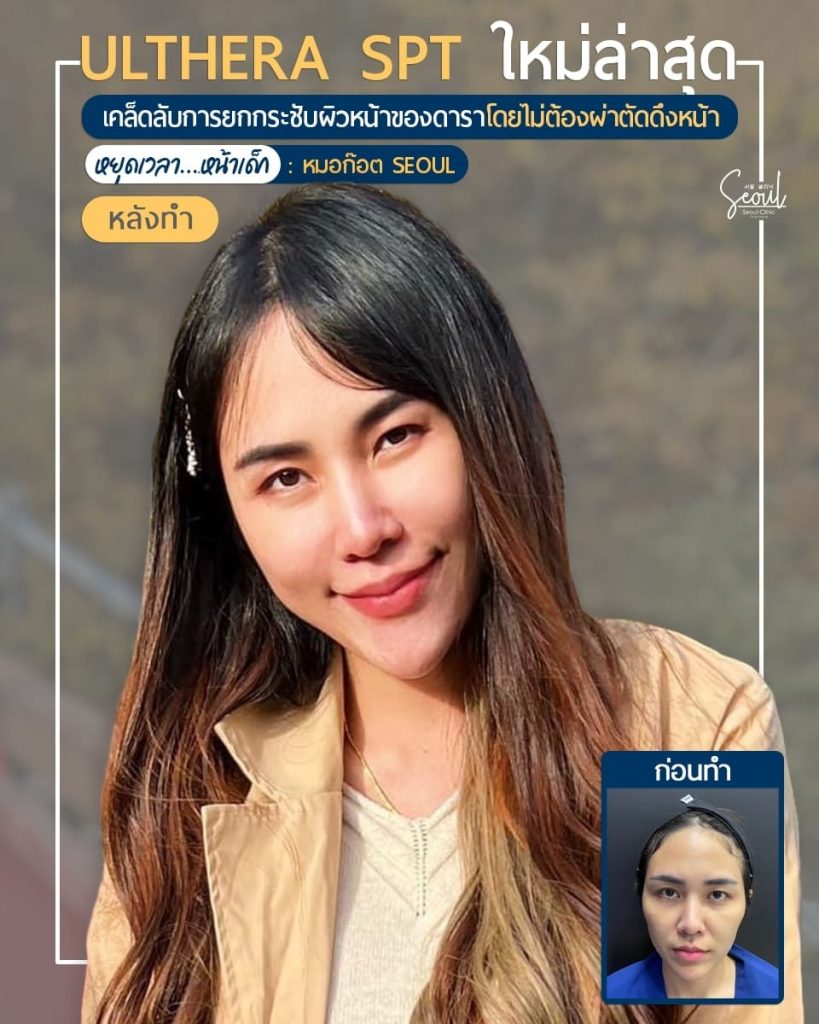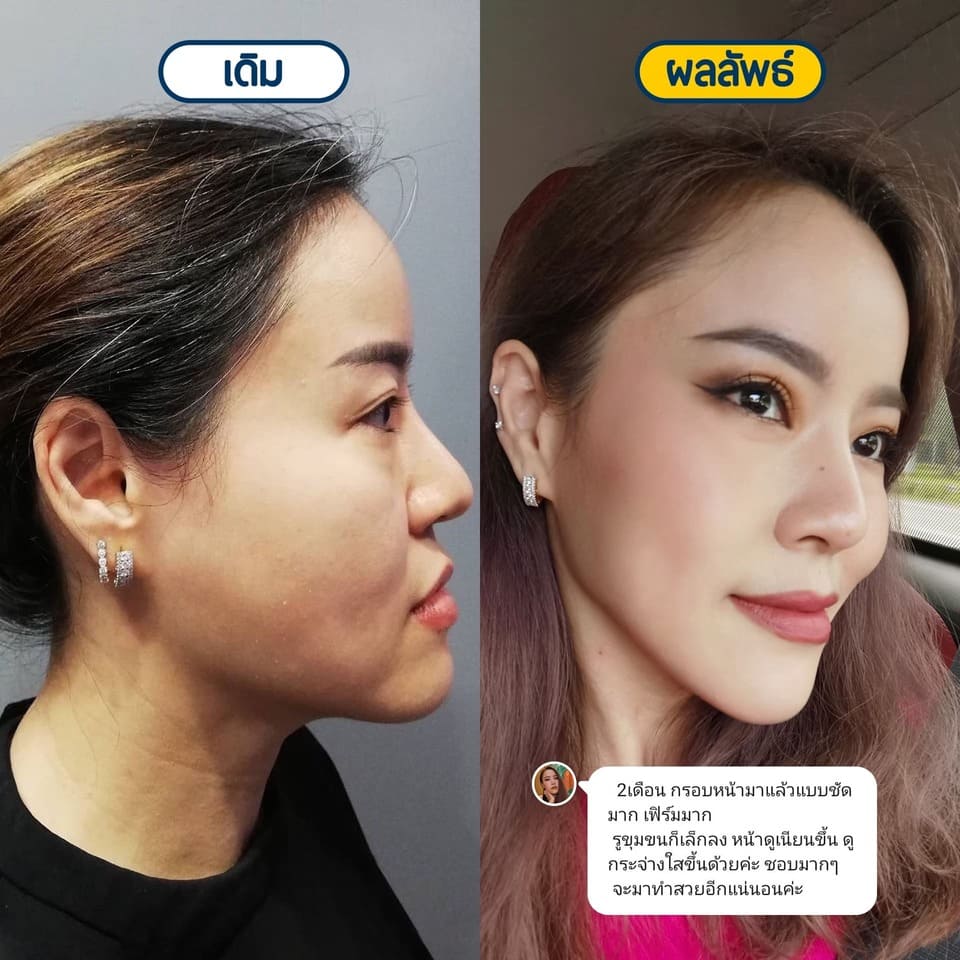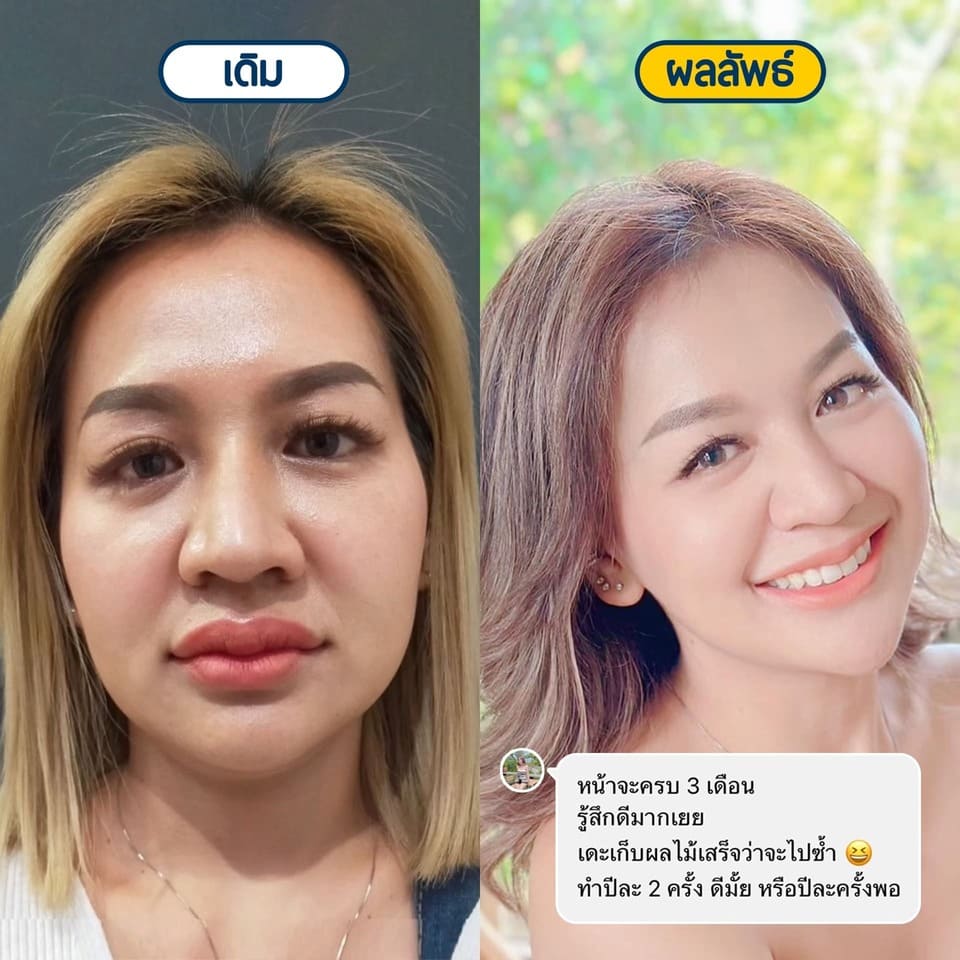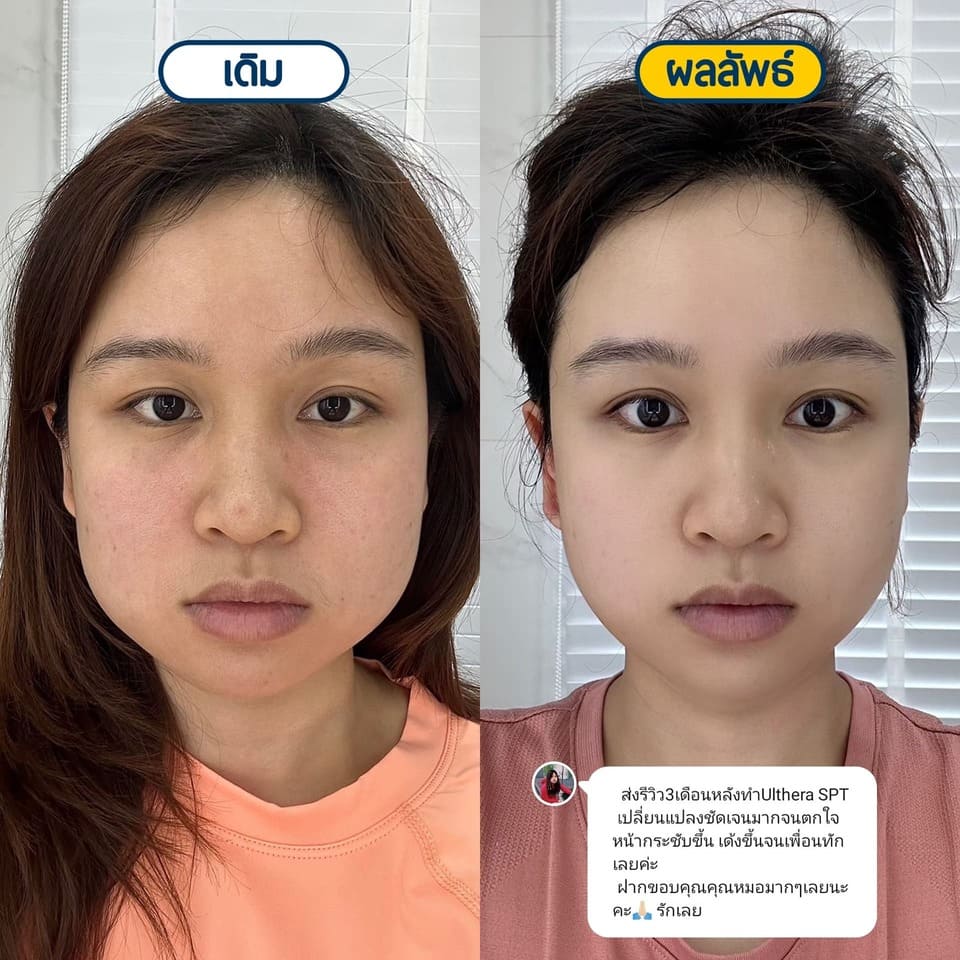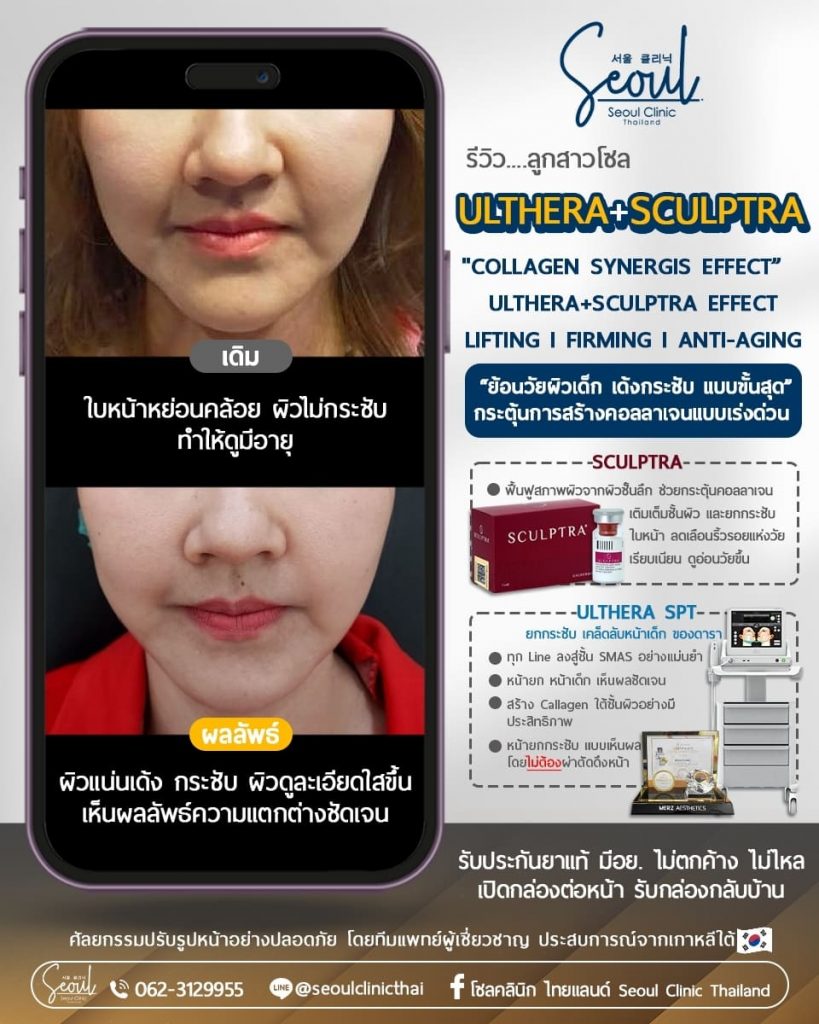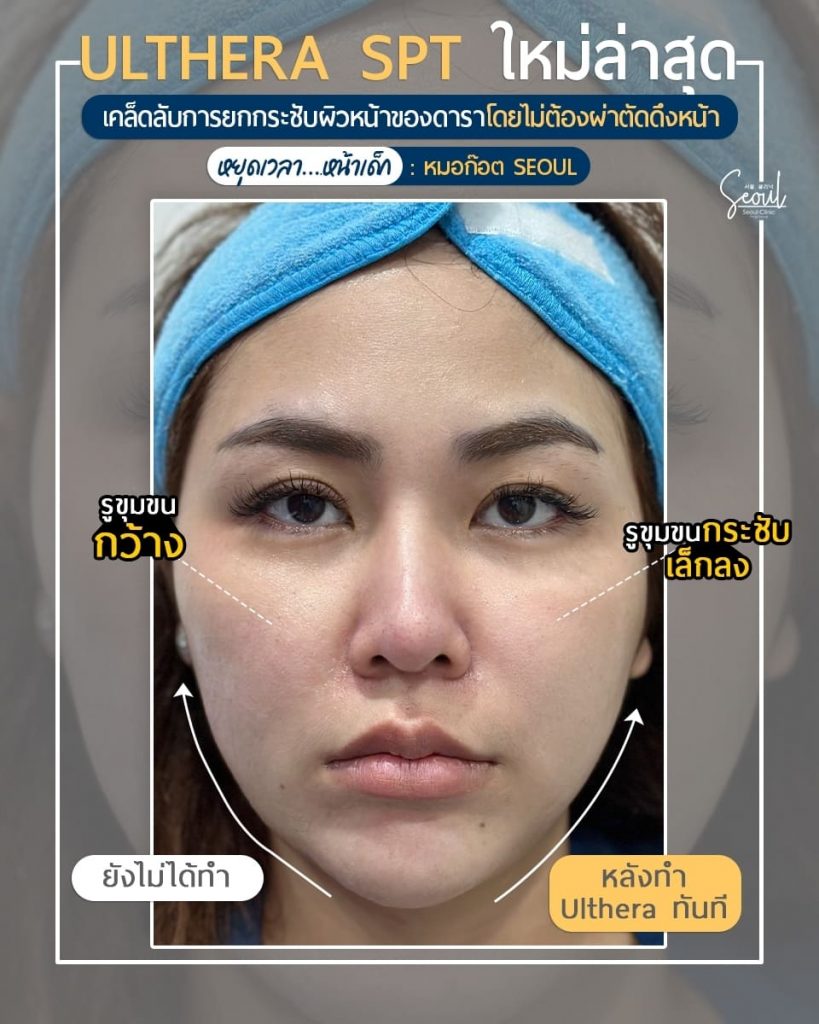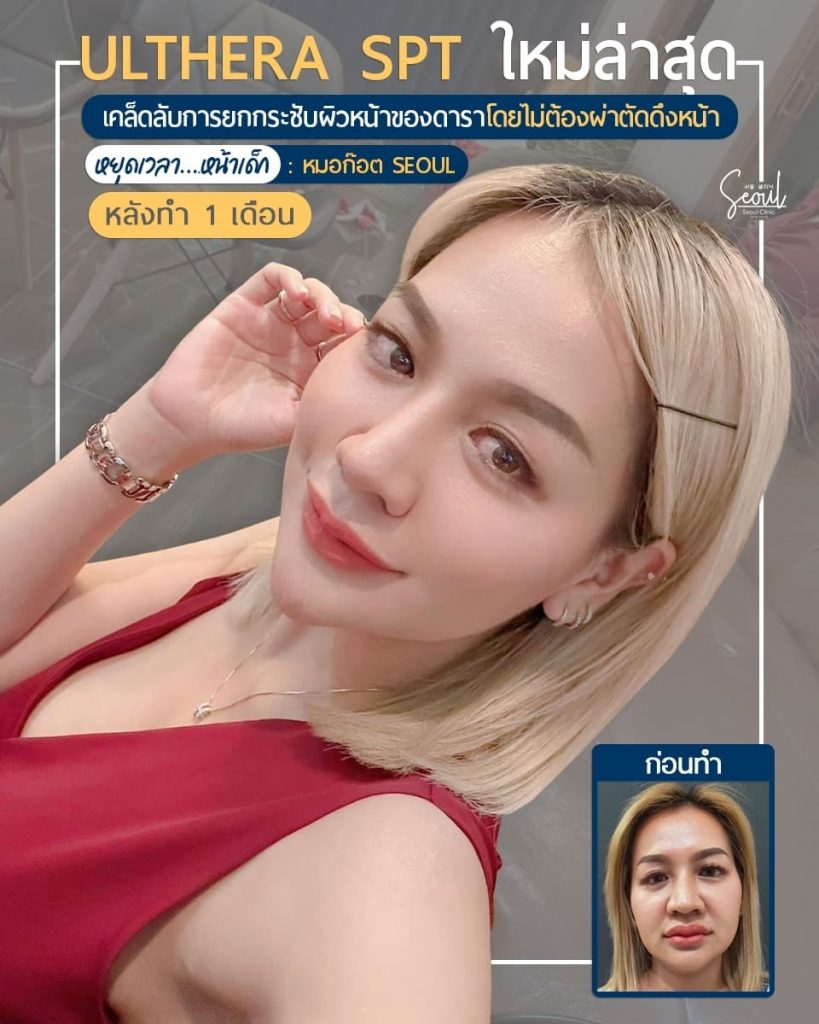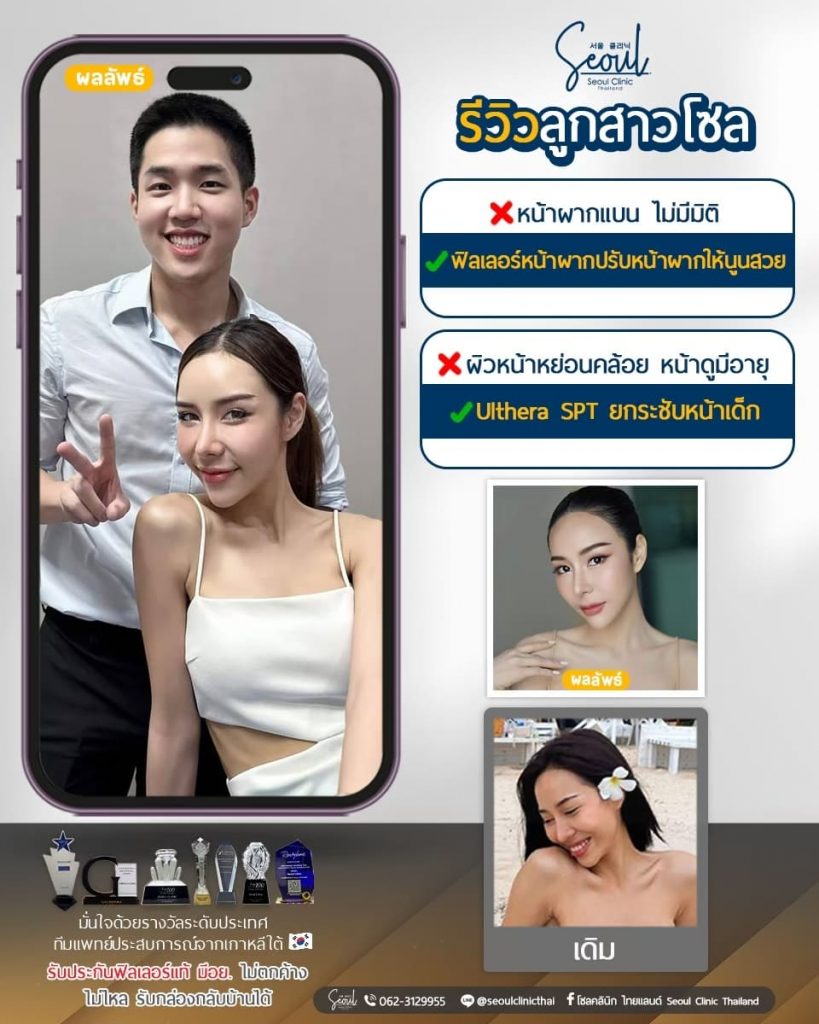What is Ulthera Prime?
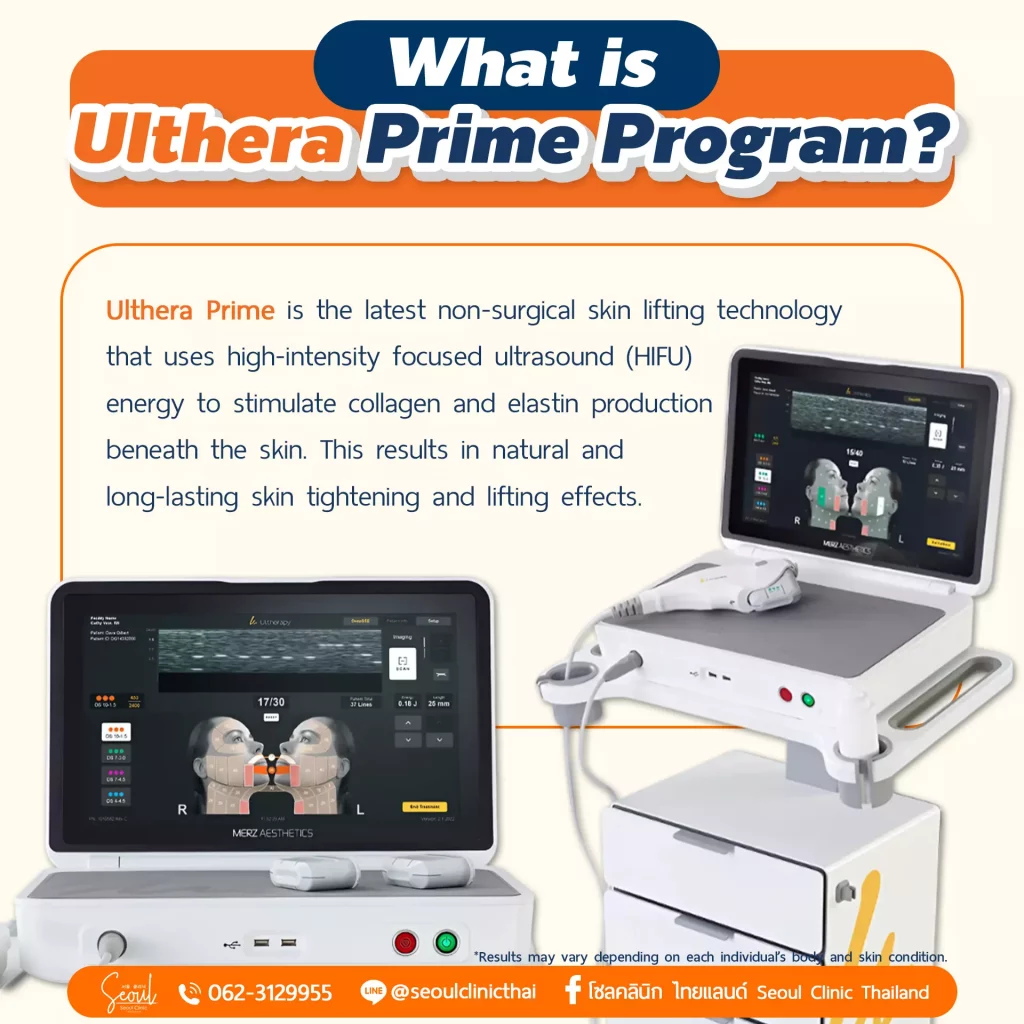
Technology of Ulthera Prime
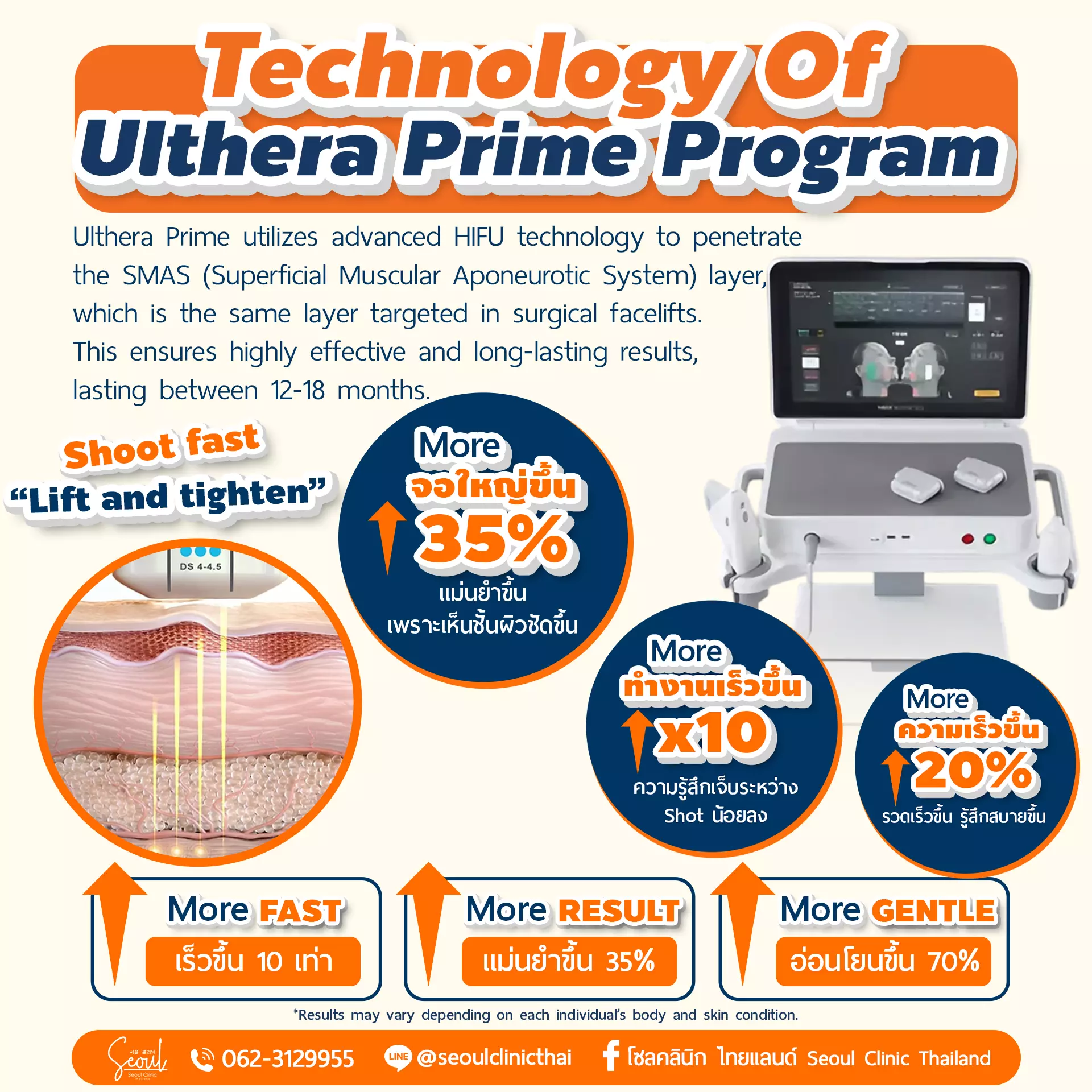
Ulthera Prime utilizes advanced HIFU technology to penetrate the SMAS (Superficial Muscular Aponeurotic System) layer, which is the same layer targeted in surgical facelifts. This ensures highly effective and long-lasting results, lasting between 12-18 months.
How is Ulthera Prime Different from Ulthera?
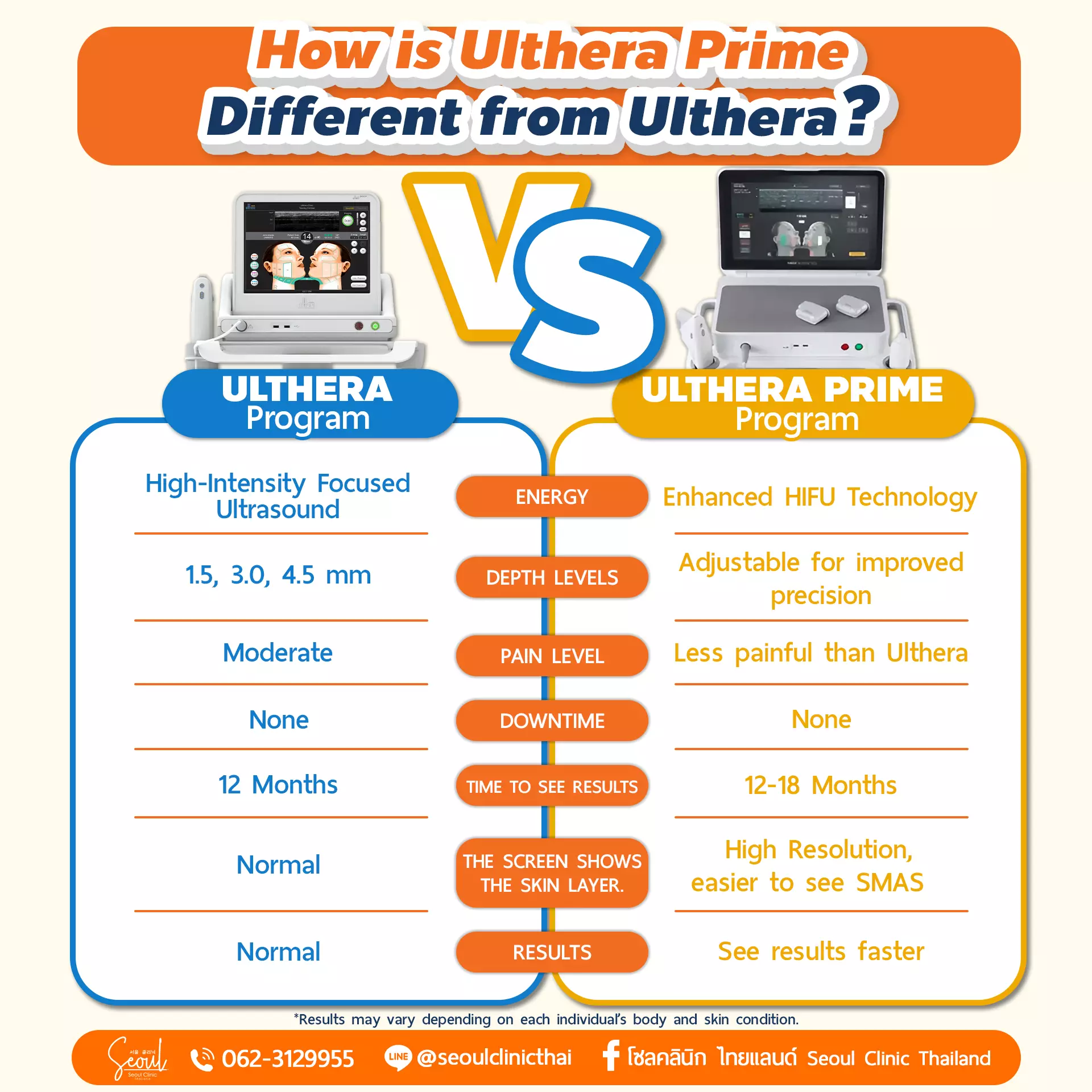
Ulthera Prime features improvements over the previous Ulthera model, offering enhanced precision and comfort. It provides better visualization for doctors, allowing more effective targeting of the SMAS layer for a more precise lifting effect.
Benefits of Ulthera Prime
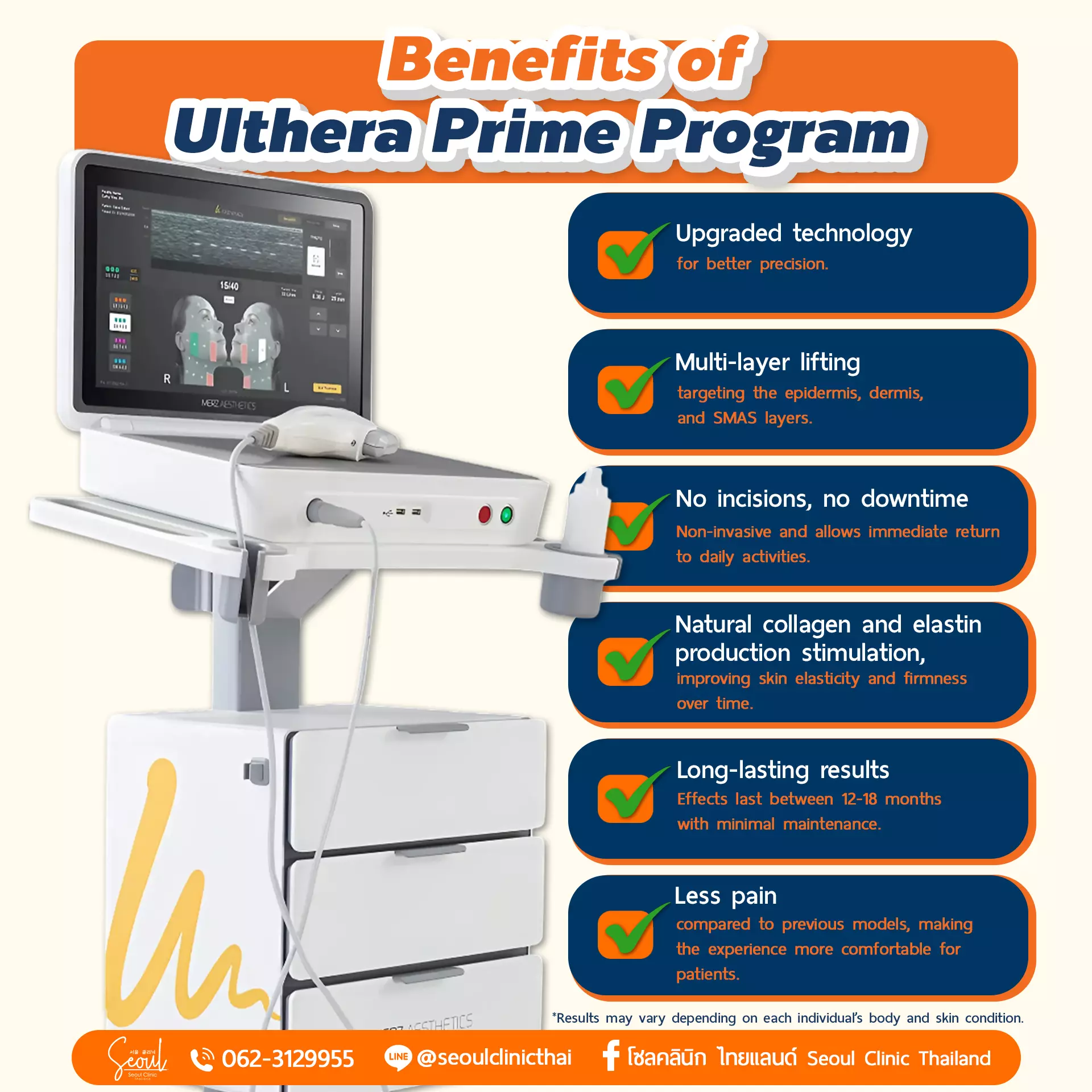
- Upgraded technology for better precision.
- Multi-layer lifting targeting the epidermis, dermis, and SMAS layers.
- No incisions, no downtime – Non-invasive and allows immediate return to daily activities.
- Natural collagen and elastin production stimulation, improving skin elasticity and firmness over time.
- Long-lasting results – Effects last between 12-18 months with minimal maintenance.
- Less pain compared to previous models, making the experience more comfortable for patients.
Mechanism of Ulthera Prime
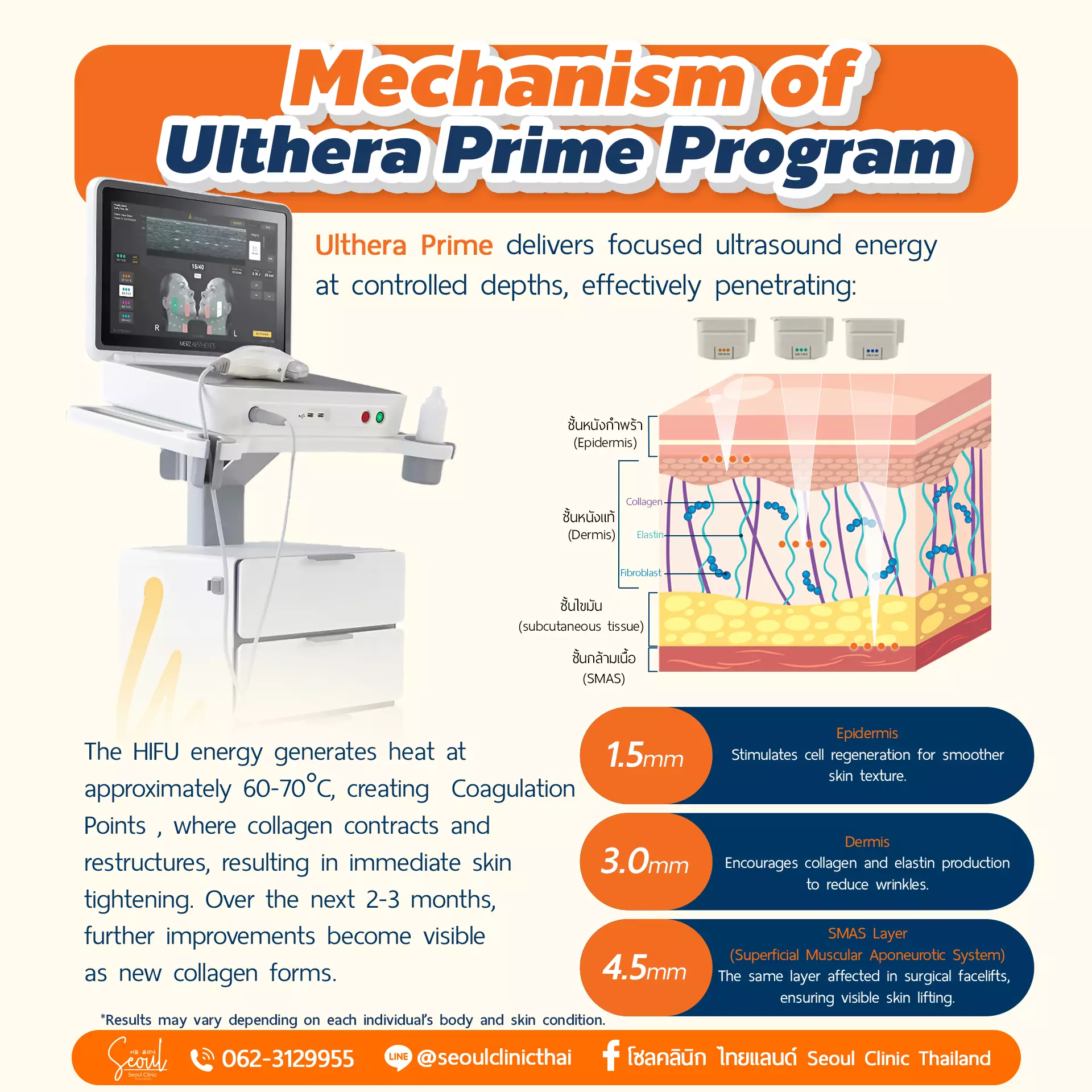
Ulthera Prime delivers focused ultrasound energy at controlled depths, effectively penetrating:
– Epidermis – Stimulates cell regeneration for smoother skin texture.
– Dermis – Encourages collagen and elastin production to reduce wrinkles.
– SMAS Layer – The same layer affected in surgical facelifts, ensuring visible skin lifting.
The HIFU energy generates heat at approximately 60-70°C, creating Coagulation Points , where collagen contracts and restructures, resulting in immediate skin tightening. Over the next 2-3 months, further improvements become visible as new collagen forms.
Who is Suitable for Ulthera Prime?
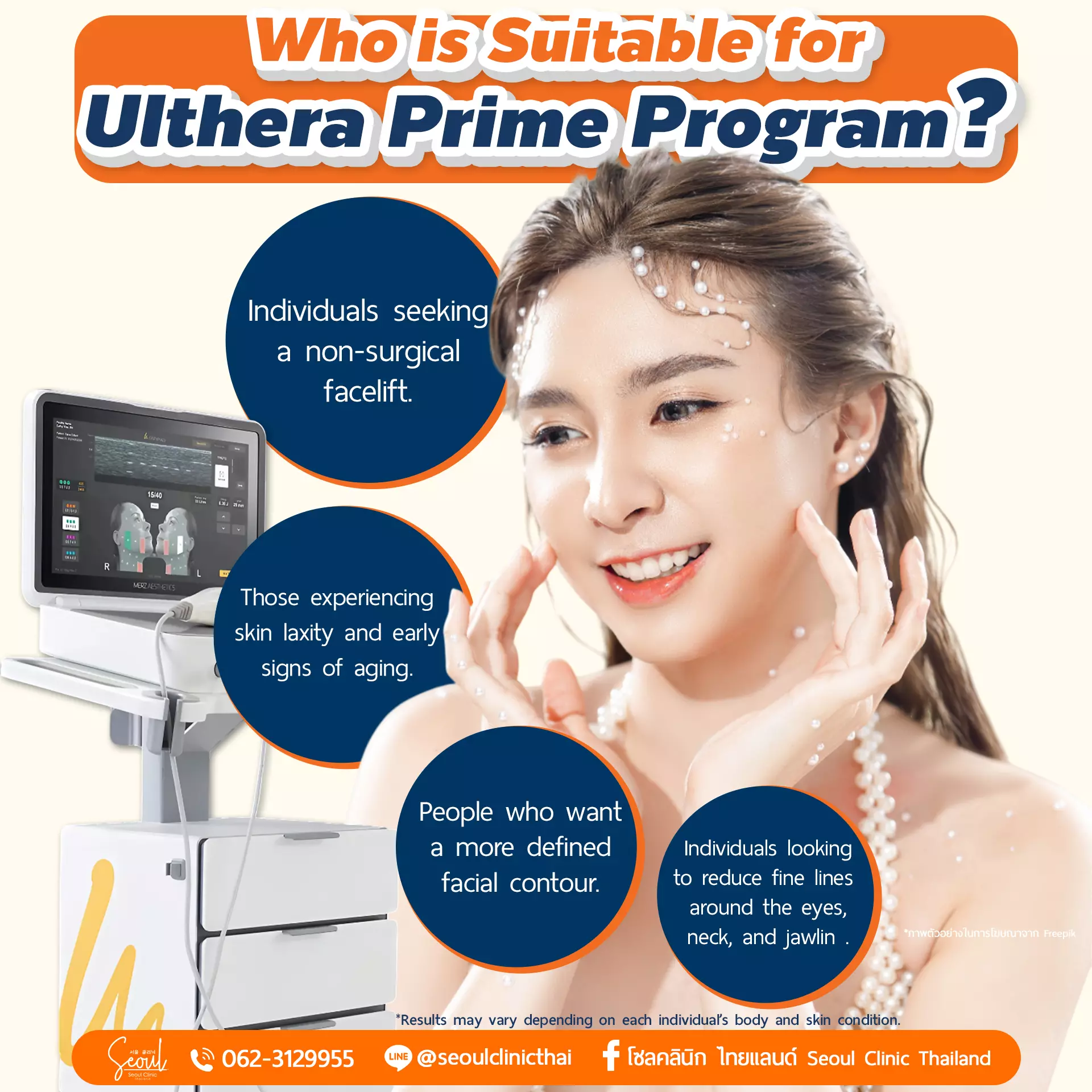
Ulthera Prime is ideal for:
– Individuals seeking a non-surgical facelift .
– Those experiencing skin laxity and early signs of aging.
– People who want a more defined facial contour .
– Individuals looking to reduce fine lines around the eyes, neck, and jawline
Procedure of Ulthera Prime
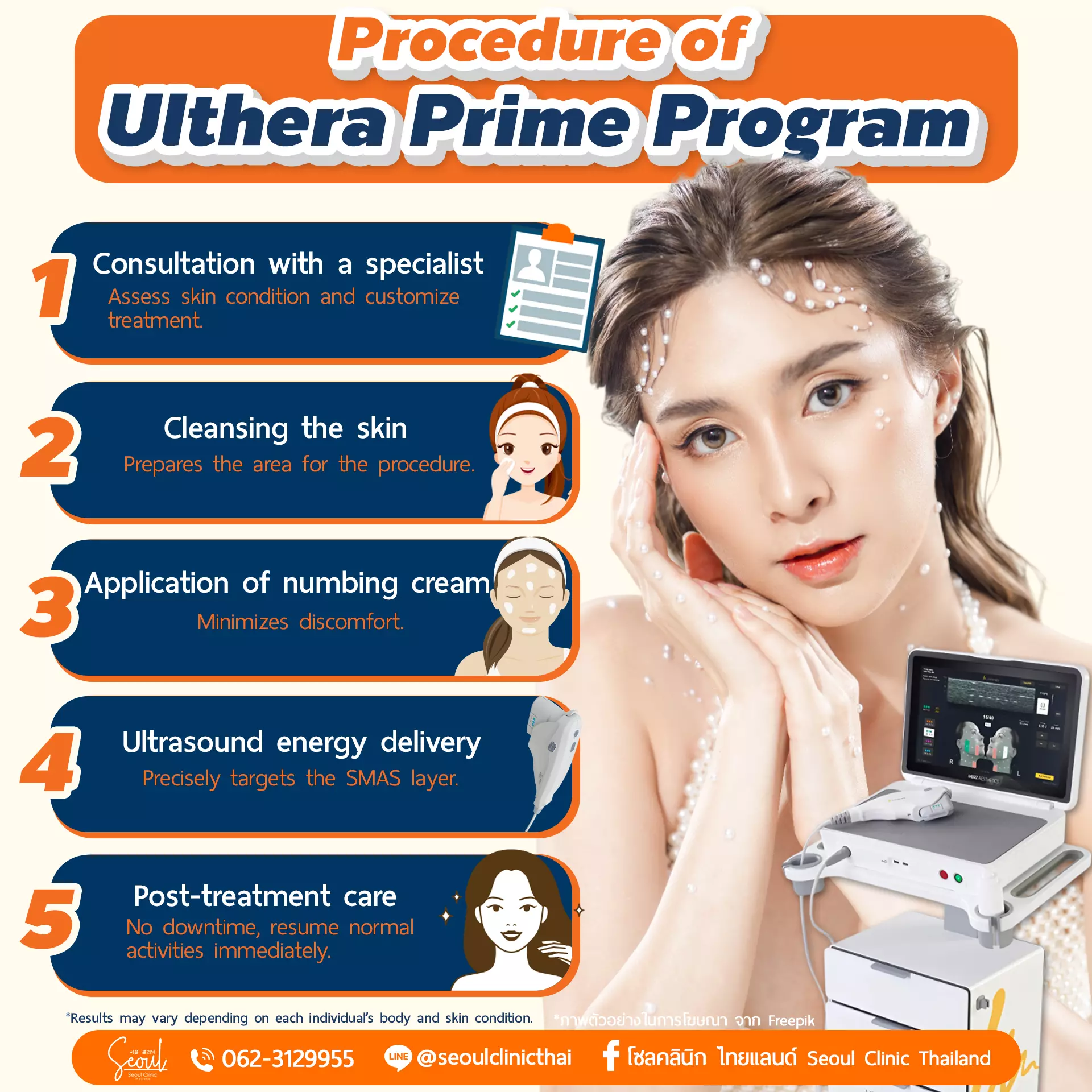
1. Consultation with a specialist – Assess skin condition and customize treatment.
2. Cleansing the skin – Prepares the area for the procedure.
3. Application of numbing cream – Minimizes discomfort.
4. Ultrasound energy delivery – Precisely targets the SMAS layer.
5. Post-treatment care – No downtime, resume normal activities immediately.
Does Ulthera Prime Have Side Effects?
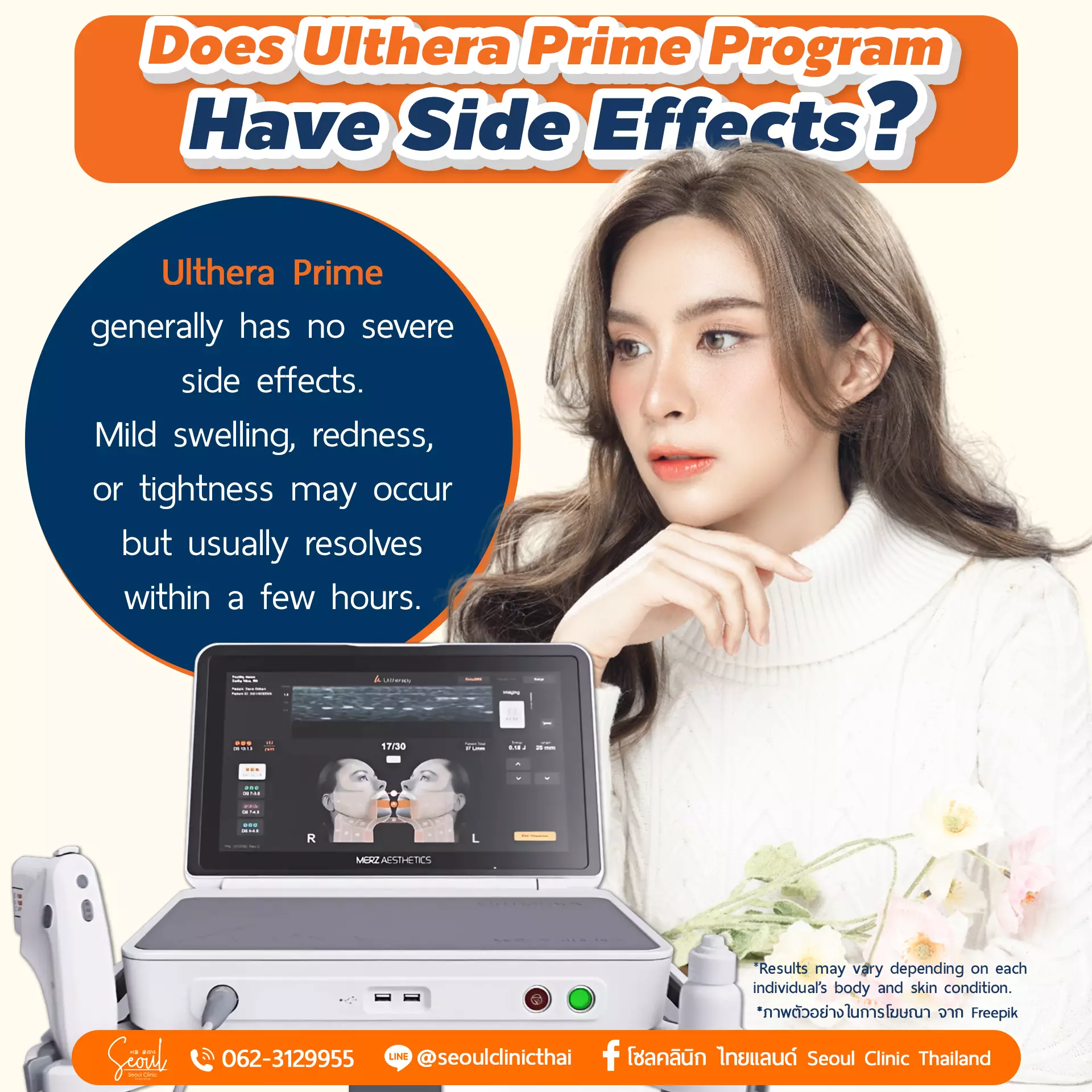
Ulthera Prime generally has no severe side effects. Mild swelling, redness, or tightness may occur but usually resolves within a few hours.
Preparation Before Ultherapy Treatment
Frequently Asked Questions About Ulthera Prime
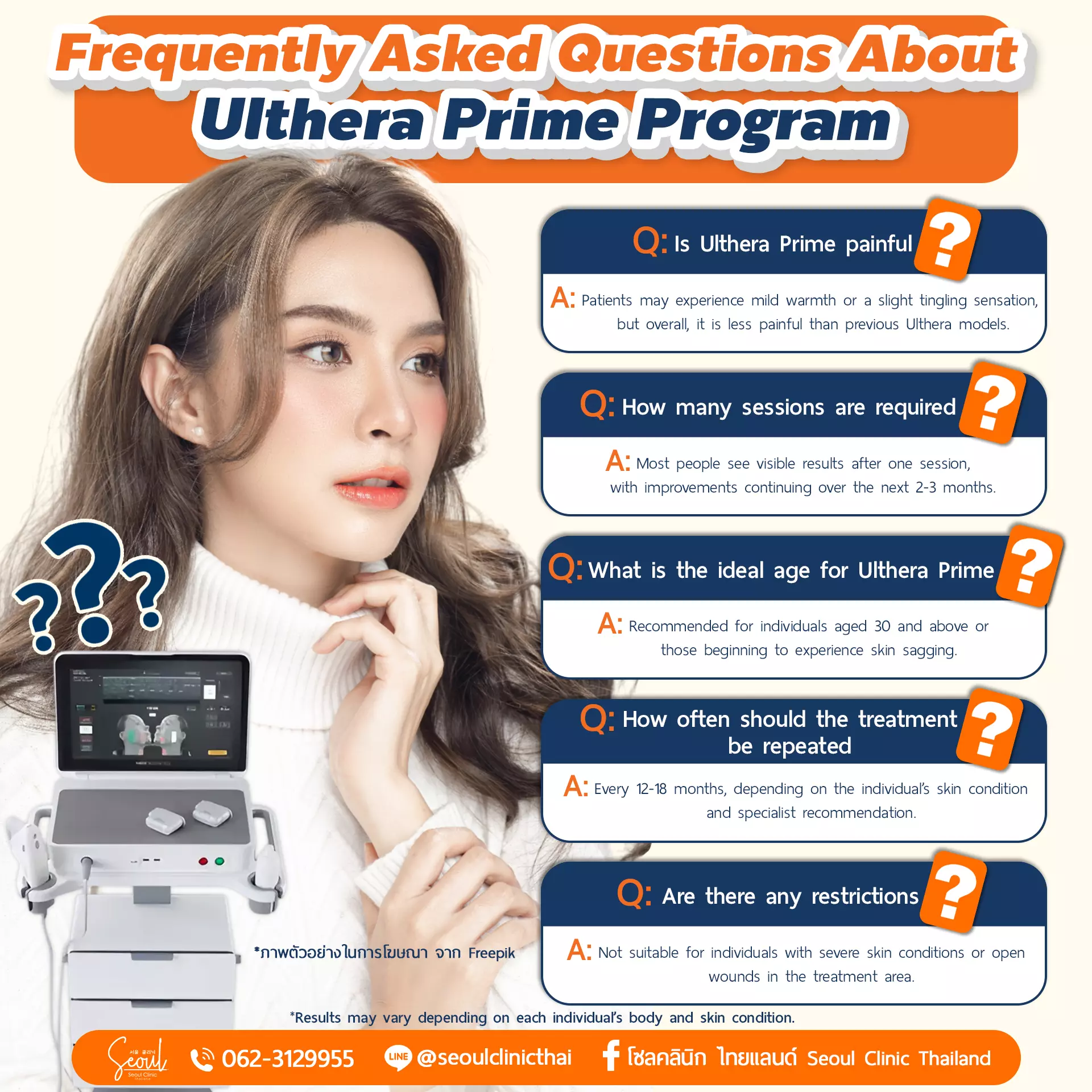
- Is Ulthera Prime painful?
– Patients may experience mild warmth or a slight tingling sensation, but overall, it is less painful than previous Ulthera models. - How many sessions are required?
– Most people see visible results after one session, with improvements continuing over the next 2-3 months. - What is the ideal age for Ulthera Prime?
– Recommended for individuals aged 30 and above or those beginning to experience skin sagging. - How often should the treatment be repeated?
– Every 12-18 months, depending on the individual’s skin condition and specialist recommendation. - Are there any restrictions?
– Not suitable for individuals with severe skin conditions or open wounds in the treatment area.
And that’s all about Ulthera Prime! This technology is perfect for those who want to lift and tighten their skin, reduce wrinkles, and enhance facial contours—without surgery or downtime. If you’re looking for a natural way to rejuvenate your skin, Ulthera Prime could be the perfect solution for you.
If you’re interested and would like to learn more, or if you’d like our medical team to assess whether Ulthera Prime is right for you, feel free to reach out to us anytime. Thank you for following along! 😊
Why Choose Ulthera at Seoul Clinic Thailand
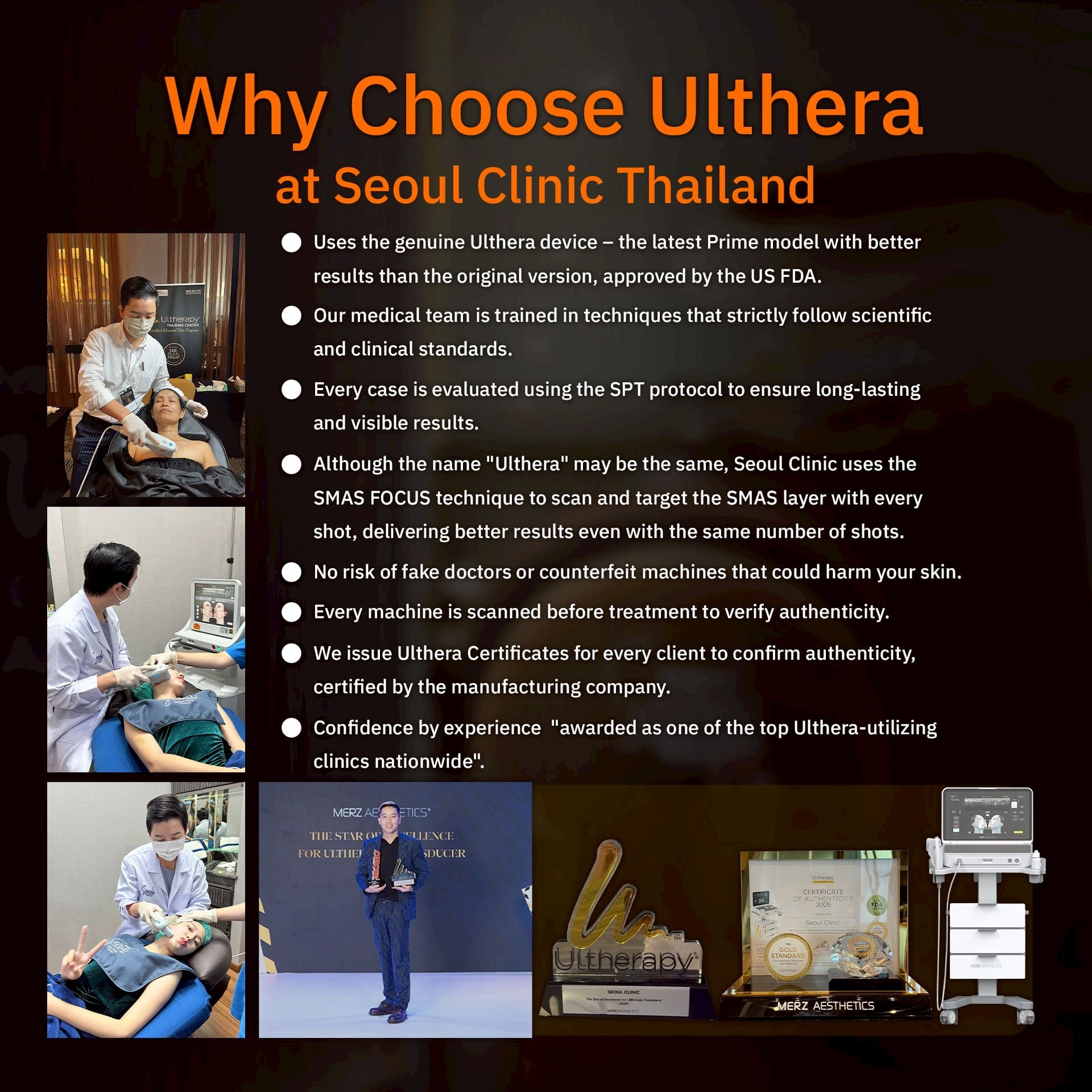
- Uses the genuine Ulthera device – the latest Prime model with better results than the original version, approved by the US FDA.
- Our medical team is trained in techniques that strictly follow scientific and clinical standards.
- Every case is evaluated using the SPT protocol to ensure long-lasting and visible results.
- Although the name “Ulthera” may be the same, Seoul Clinic uses the SMAS FOCUS technique to scan and target the SMAS layer with every shot, delivering better results even with the same number of shots.
- No risk of fake doctors or counterfeit machines that could harm your skin.
- Every machine is scanned before treatment to verify authenticity.
- We issue Ulthera Certificates for every client to confirm authenticity, certified by the manufacturing company.
Confidence by experience "awarded as one of the top Ulthera-utilizing clinics nationwide".
@seoulclinic_thailand 👉ยกชัด ยิงแน่นทุกชั้นผิว โปรแกรม Ultraformer III 🔥คืนความอ่อนเยาว์ให้ผิวแบบไม่ต้องพักฟื้น✨️ ✅️ยกกระชับผิว หน้าเรียว ✅️กระตุ้นคอลลาเจน ✅️ฟื้นฟูผิวให้ดูอ่อนเยาว์ 🛒โปรโมชั่น 400 Shot เพียง 9,999.- แถมฟรี❗❗ Endymed RF เหนียง 1 ครั้ง 🤍อยากหน้าเรียว ดูอ่อน และให้ได้ผลลัพธ์ที่ดีมาที่ โซล คลินิก ไทยแลนด์ ได้เลยค่าา 🥰ช่วงนี้เครื่องปลอมระบาด ควรเลือกคลินิกที่ได้มาตรฐาน เครื่องแท้แสกนเช็คได้...ด้วยความห่วงใยจากโซล คลินิก ไทยแลนด์ 👉Lifted and firm at every skin layer with Ultraformer III 🔥 Restore youthful skin with zero downtime✨️ ✅️Tighten & contour for a slimmer face ✅️Stimulate collagen production ✅️Rejuvenate for a more youthful look 🛒Promotion: 400 Shots only 9,999 THB – includes FREE 1 session of Endymed RF (double chin area) 🤍Want a slimmer, fresher, and more youthful face? Visit us at Seoul Clinic Thailand! 🥰With fake machines spreading, be sure to choose a certified clinic. We use authentic devices that can be verified by scan – with love and care from Seoul Clinic Thailand. #UltraformerIII #หน้าเรียว #หน้ายกกระชับ #คลินิกเสริมความงามพัทยา #FacialLifting #PattayaBeautyClinic
♬ original sound - Seoul Clinic - Seoul Clinic

